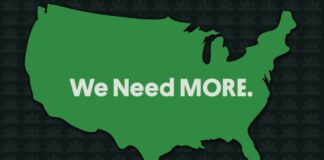New York, NY – In recognition of International Overdose Awareness Day (August 31), the Drug Policy Alliance (DPA) is urging policymakers to adopt Bold Solutions to the Overdose Crisis, including innovative harm reduction, drug education, evidence-based treatment and policy solutions in order to make a concerted dent in the overdose crisis, which claimed nearly 70,000 lives in the U.S. alone last year.
“Because people are still dying at an alarming rate, we must be willing to consider alternative approaches such as overdose prevention centers or eliminating criminal penalties for personal drug use that, though proven successful in other countries, may still seem radical,” said Lindsay LaSalle, Director of Public Health Law and Policy, Drug Policy Alliance, “Portugal and Canada were similarly impacted by high overdose mortality and have successfully implemented “outside-the-box” solutions. It’s time for U.S. policymakers to move beyond the rhetoric and get realistic about what it’s going to take to save lives.”
1. Overdose Prevention Centers
Overdose prevention centers, also known as supervised consumption sites, are a proven approach in reducing drug-related deaths. They offer sterile, controlled settings for people to use pre-obtained drugs under the supervision of trained professionals who can intervene in case of an overdose or other medical event. They also provide health care, counseling, and referrals to health and social services, including drug treatment.
DPA has led the effort to implement these centers nationwide, but we’re fighting against the fear and stigma around drug use. This is one solution we can’t afford to ignore.
2. Drug Checking & Safe Supply
Recent increases in overdose deaths are driven by synthetic opioids like fentanyl, which is being introduced into the heroin supply. Most users don’t appear to be seeking fentanyl and are not aware that their drugs may contain fentanyl.
Fentanyl checking strips, originally designed for urine drug tests, are now being used to test for the presence or absence of fentanyl. When people are aware of fentanyl in their drugs, they may choose not to use them, use more slowly, or use with others who have naloxone.
Canada is going even further by opening “safe supply” programs that provide prescription opioids like hydromorphone for people at high risk of an overdose. Participants in these programs receive a fentanyl-free dose injected under medical supervision. This keeps them away from the adulterated street supply and greatly reduces their risk of an overdose.
3. Safety First — a Revolutionary Drug Education Program
Telling teens to “Just Say No” to drugs doesn’t work. Unlike D.A.R.E and other abstinence-only programs, DPA’s drug education program, Safety First, is based on the philosophy of harm reduction. It is designed to foster open and honest conversations about drugs and drug-related risks, like overdose, among teens, educators and parents.
We’re releasing Safety First next month! Get on our mailing list so you can be one of the first to download the new curriculum.
4. Low-Barrier Access to Methadone and Buprenorphine Therapies
Methadone and buprenorphine are medications used to treat opioid addiction. These therapies cut overdose death risk in half. But the stigma associated with drug use has blocked the widespread adoption of life-saving treatment options like these, in addition to policy barriers that make both medications difficult for patients to access.
In the United States, methadone can only be accessed at federally licensed Opioid Treatment Programs (OTPs) and most patients are required to attend these programs up to six days a week in order to receive their medication. This presents tremendous barriers for people living in rural communities and in areas with limited access to transportation.
Buprenorphine can only be prescribed by doctors and certain other health care providers who have received an advanced training and waiver from the government. Due to these hurdles, the majority of doctors in the United States have not received this training and cannot prescribe this life-saving medication to their patients.
If we want to get serious about ending the current crisis, we need to support the evidence-based harm reduction and treatment interventions that work.
5. All Drug Decriminalization
Each year, there are more than 1.6 million drug arrests in the U.S., most for possession only. DPA supports decriminalizing all drugs, which means no one would face criminal penalties for drug possession or low-level sales.
Decriminalization would prioritize the health and safety of people who use drugs over punishment. It would also reduce the stigma associated with drug use so that more people are encouraged to come out of the shadows and seek treatment and other support.
Join the World’s Premier Gathering on Drug Policy Reform
If you’re interested in exploring these and other ground-breaking solutions to the overdose crisis, join us at the International Drug Policy Reform Conference this November 6-9 in St. Louis, MO. Leading experts and over 1500 people from more than 80 countries will be present. Media interested in attending can apply for a press pass by emailing Matt Sutton at msutton@drugpolicy.org.











